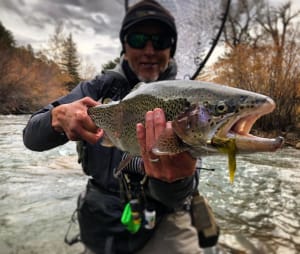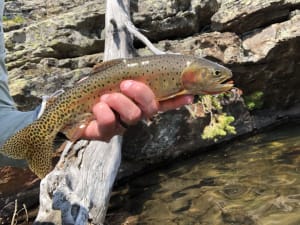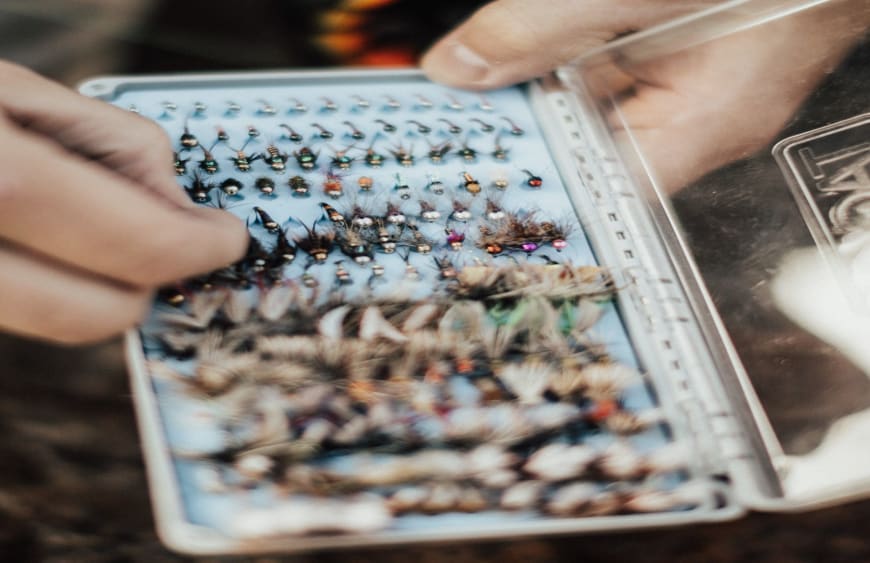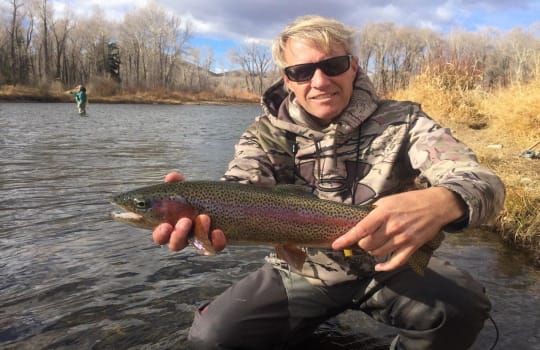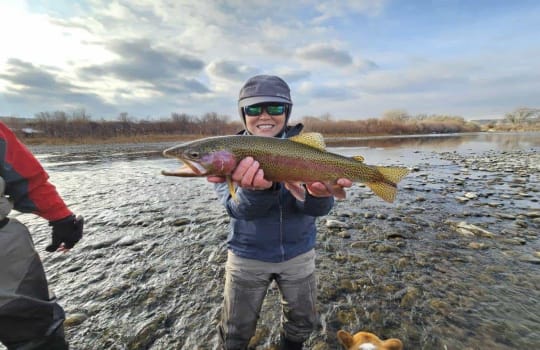Guide Tom Caprio shares his top 20 must have flies for fishing Colorado’s rivers and streams.
By Guide Tom Caprio
Deciding what flies to include in our boxes can feel overwhelming! There’s a dizzying array of fly patterns and variations, some with names that feel helpful, others with names that only add to the confusion. We can’t bring them all to the river with us. So, how do we build a simple base selection of flies that will work most of the time?
Well, similar to the way some investments have a proven track record of performance year in and year out, there are flies that just simply produce fish time and time again. Whether you are fishing large rivers, small creeks, backcountry lakes, or lower elevation reservoirs these flies have proven to consistently put fish in the net, year after year.
PATTERNS: with suggested sizes and what they imitate. Some subsurface patterns have beadhead or flashback options. You’ll notice almost all can imitate multiple food sources which is part of their appeal to trout.
DRY FLIES:
1. Parachute Adam (sizes 12-24): imitate most mayflies, and smaller sizes for midges.
2. Comparadun /Sparkle Dun (12-22): different profile for mayflies of all sizes, midges in small sizes.
3. Elk Hair Caddis (14-18): dead drifted or skated. Big ones also imitate stoneflies and moths.
4. Stimulator (10-16): hoppers, stoneflies, caddis, crane flies, miller moths, dragon flies. Good for dry/dropper rigs.
5. Ants (14-20): Underused and fish love them- they are everywhere! Small versions also look like midge or mayfly emergers. Natural ants eventually sink so drown them too!
6. Parachute Hopper (12/14): Also looks like caddis, stoneflies. Good for dry/dropper or double dry rigs.
NYMPHS/EMERGERS:
7. Pheasant Tail (sizes 12-22): larger sizes imitate stoneflies and larger mayflies in rivers, and, in lakes, dragon flies and callibaetis. Medium/Smaller sizes imitate most other mayflies.
8. Prince Nymph (12-18): stonefly imitation in large sizes, mid-size for diving or dead caddis, small for mayflies.
9. Rainbow Warrior (16-22): midge and mayfly emerger for both lakes and rivers.
10. RS2 (18-22): midge and mayfly emerger (bwo’s, beatis, tricos).
11. Zebra Midge (14-22): tungsten bead gets these midge larva/emerger imitations quickly into the ‘feeding zone’. Suspend in lakes for hatches of large or small midges. Smaller versions best for rivers.
12. JuJu Bee/ Baetis (18-22): for small midges or mayflies -effective in heavily fished water.
13. Hares Ear (12-18): dragon flies, damsels, ‘fatter’ mayflies (drakes/pmd’s), caddis larva can all be imitated by these ‘buggy’ flies.
14. Barrs Emerger (16-20): excellent choice for a variety of small to mid-sized mayfly emergers.
15. Lafontane Caddis Emerger (16/18): dead drift or ‘swing’ them during caddis hatches. Strip on lakes.
16. Copper John (12-18): stonefly and lake mayfly in big sizes. Other sizes for most other mayflies. Caddis larva in 16/18 (chartreuse).
17. Pat’s Rubber Leg (10/12): stonefly (for rivers with salmonflies use as large as size 4), crayfish, dragon flies, crane fly (cut off the legs).
18. San Juan worm: variety of colors imitate aquatic and earth worms, skinny leeches. Year round attractors.
19. Eggs: 3 season attractors (spring/fall/winter). Trout, suckers, whitefish, and salmon eggs are all on the menu during their spawning times. Various colors work.
STREAMERS:
20. Wooly Bugger (Sizes 8-14): universal streamer imitating a wide array of baitfish, leeches, crayfish, dragonflies, damsels- whatever you want it to be.
While some fisheries have specific patterns that can work better depending upon temperatures, flows, and other variables, if you have good fly selection (matching shape/size/color) and consistent quality presentations, these 20 will be successful in most situations. Quality presentations include the right speed (or lack of), action (or lack of), and depth of the natural food source (insect, baitfish, or whatever). Fly fishing is a game of imitation and presentation. These 20 flies will get the job done in terms of imitation. The presentation is up to you!
Follow Tom on Instagram @tomcaprioflyfishing

